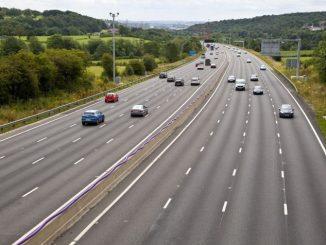
The risk of being involved in a breakdown on a stretch of all-lanes running (ALR) smart motorway is 216% higher than on a standard motorway because there is no hard shoulder for drivers to move to, according to a damning new report.
The study, commissioned by Irwin Mitchell solicitors and prepared by transport specialists Royal HaskoningDHV found that ALRs have the “lowest level of intrinsic safety” when compared to any other form of motorway and that the government’s decision to press ahead with them is not justified.
Irwin Mitchell said the report took more than a year of research and laid bare “more shocking details about how a cost-driven, value engineering approach is compromising the public’s safety.”
Helen Smith, associate solicitor at the firm, said: “The report follows on from a number of concerns raised by key figures, including a police commissioner and coroners, about the safety of smart motorways.
“All of this just adds to the growing groundswell of opinion that more needs to be done to improve safety on smart motorways - which operate on some of the country’s major routes.
Read more
- Transport secretary orders safety review of smart motorways
- Government refuses to scrap smart motorways but admits launch was too early
- Police commissioner calls for “inherently unsafe” smart motorways to be ditched
“We call on the Department for Transport, Grant Shapps, and Highways England to acknowledge that the development and roll out of ALRs was flawed.
“They must act in accordance with their legal duties and take action to improve safety, or face formal legal action.”
Irwin Mitchell is representing Claire Mercer, whose husband Jason died on an ALR stretch of the M1 in June 2019.
Mercer said: “Smart motorways are death traps.
“I want to prevent any future deaths on smart motorways.”
The report comes after transport secretary Grant Shapps told MPs he was delaying publication of a progress report from Highways England on the safety of smart motorways, so that the Office for Rail and Road could review its findings.













